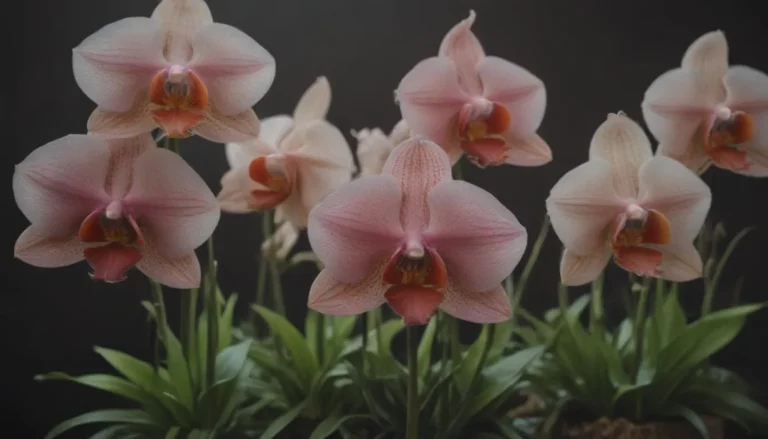Comprehensive Companion Planting Guide for Vegetable Gardens

Welcome to our comprehensive guide on companion planting for your vegetable garden! If you’re looking to boost the health and productivity of your plants while deterring pests and promoting biodiversity, companion planting is the way to go. This practice involves planting different species of plants close to each other to provide mutual benefits, creating a harmonious ecosystem in your garden. While companion planting is often based on observations and garden lore rather than hard scientific facts, the results speak for themselves. Join us as we explore the world of companion planting and learn how to make the most of your garden space.
Understanding Companion Planting
Companion planting is all about creating beneficial relationships between plants to enhance their growth and protect them from pests and diseases. Some plants offer specific advantages to their companions, while others benefit mutually from being grown together. The key is to choose plant combinations that complement each other and work harmoniously to create a thriving garden ecosystem.
Before diving into companion planting, it’s essential to follow the rules of crop rotation. Avoid planting the same crop in the same spot year after year, as this can lead to pest and disease issues. Once you have your crop rotation plan in place, you can start exploring the world of companion planting with our handy chart below.
Companion Planting Chart
When it comes to companion planting, there are endless possibilities for plant pairings. While the specific recommendations may vary depending on the source, here are some popular garden crops along with their anecdotal companion plants:
- Tomatoes: Basil, marigolds, carrots
- Beans: Corn, potatoes, cucumbers
- Cucumbers: Sunflowers, radishes, peas
- Peppers: Tomatoes, basil, onions
- Lettuce: Carrots, radishes, strawberries
These are just a few examples to get you started. Feel free to experiment with different plant combinations to see what works best in your garden.
Benefits of Companion Planting
Companion planting offers a wide range of benefits for your garden. By strategically pairing plants together, you can:
- Attract beneficial insects and pollinators
- Deter pests and repel harmful wildlife
- Improve soil fertility and nutrient uptake
- Provide shade and support for vulnerable plants
- Suppress weeds and mark garden rows effectively
By harnessing the power of companion planting, you can create a balanced and resilient garden that thrives year after year.
Tip: Planting Strategies
When planting companion plants, it’s essential to consider spacing requirements to ensure optimal growth. While most plants have specific spacing preferences, you can always compromise by planting them at a moderate distance that accommodates both plants’ needs. Remember to refer to seed packets and plant care guides for guidance on spacing.
Superstar Companion Plant Combinations
Certain plant combinations stand out as particularly effective in promoting plant health and warding off pests. Here are some of the top-performing combinations to try in your garden:
- Corn, pole beans, and squash: Known as the “Three Sisters,” these plants work together to provide mutual support and protection.
- Basil and tomatoes: This classic Italian pairing not only enhances flavor but also promotes healthy growth.
- Nasturtiums: These colorful flowers attract beneficial insects and repel pests in a variety of garden settings.
By incorporating these superstar combinations into your garden, you can maximize the benefits of companion planting and enjoy a more productive harvest.
Companion Planting with Herbs
If space is limited in your garden, don’t worry—herbs can also play a valuable role in companion planting. Herbs like mint, garlic, and dill are excellent at deterring pests and attracting beneficial insects. By strategically placing herbs throughout your garden, you can create a pest-resistant and biodiverse environment that supports plant growth.
Flowers as Companion Plants
In addition to herbs, flowers can also serve as valuable companion plants in your vegetable garden. Annuals like marigolds, zinnias, and sunflowers help repel pests and attract pollinators, while perennials like lavender add beauty and fragrance to your garden.
Flowers as Pollinator Magnets
To encourage pollination and fruit production in your vegetable garden, consider planting flowers that attract pollinators like bees and butterflies. Zinnias, sunflowers, and daisies are popular choices that help draw pollinators to your garden and ensure a bountiful harvest.
Flowers as Pest Deterrents
Certain flowers, such as petunias and marigolds, act as natural pest repellants for common garden pests like squash bugs and cabbage worms. By strategically planting these flowers throughout your garden, you can help protect your crops from destructive pests and promote overall plant health.
Planting Strategies for Flowers
When incorporating flowers into your garden, consider factors like bloom time, watering needs, and sunlight requirements. By selecting flowers that bloom at the same time as your vegetables and placing them strategically throughout your garden, you can create a visually stunning and functional garden space.
Avoiding Planting Mistakes
While companion planting offers numerous benefits, there are certain plant combinations to avoid to prevent competition and reduce the risk of pests and diseases. Plants with similar nutrient needs, growth habits, or susceptibility to pests should not be planted together to prevent issues like overgrowth, nutrient depletion, and the spread of diseases.
For example, avoid planting fast-growing vines like zucchini next to delicate plants like lettuce, as they may overshadow and outcompete them. Similarly, keep tomatoes and corn apart to prevent shading and nutrient competition.
By being mindful of which plants to avoid planting together, you can create a harmonious and productive garden that thrives throughout the growing season.
Conclusion
Companion planting is a valuable tool for any gardener looking to promote plant health, deter pests, and increase biodiversity in their garden. By strategically pairing plants together based on their complementary benefits, you can create a thriving ecosystem that supports and enhances plant growth.
Whether you’re a beginner gardener or a seasoned expert, companion planting offers endless opportunities to experiment and discover new plant combinations that work best for your garden. By following the tips and recommendations outlined in this guide, you can harness the power of companion planting to create a beautiful, productive, and sustainable garden that flourishes year after year.
So, next time you’re planning your garden layout, consider the benefits of companion planting and explore the exciting world of plant partnerships. Your garden will thank you for it! Happy gardening!





